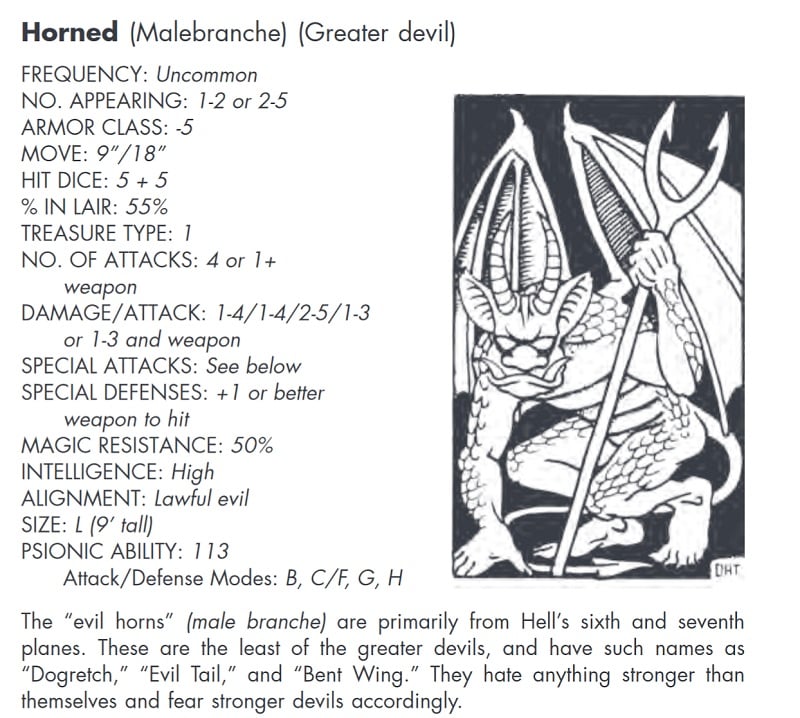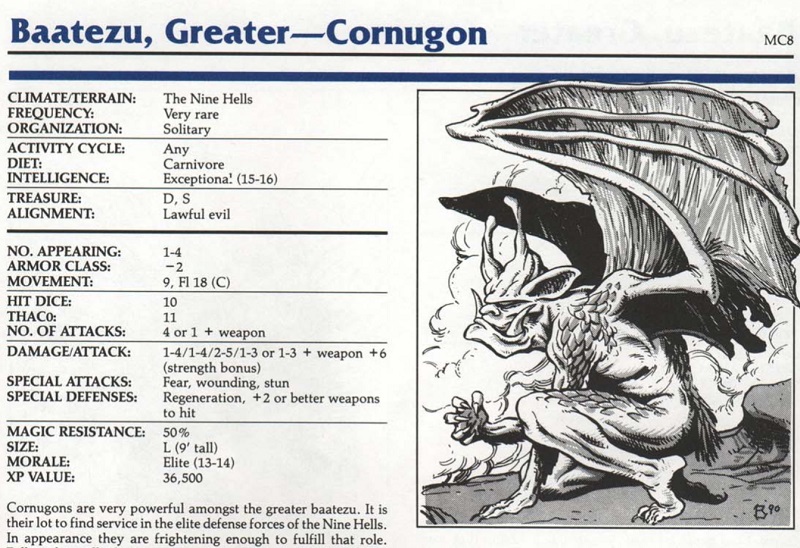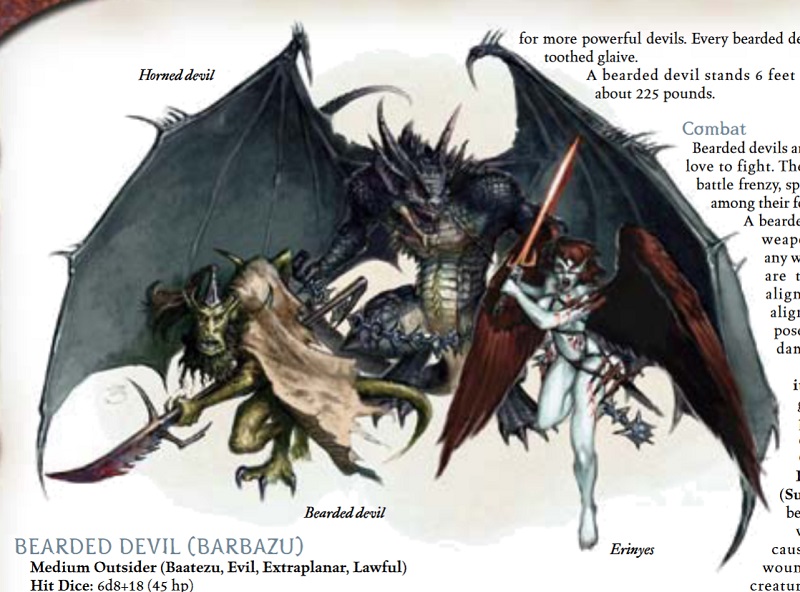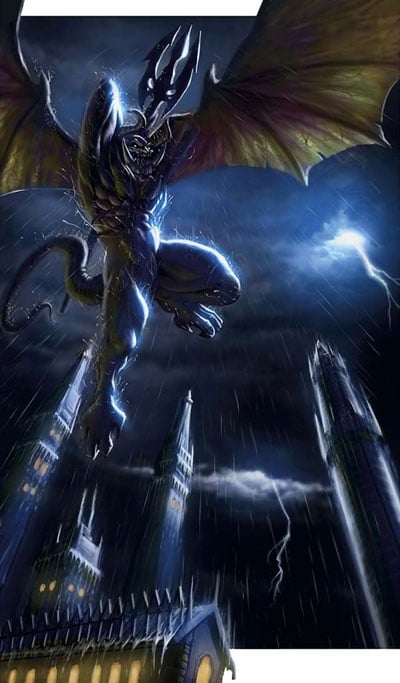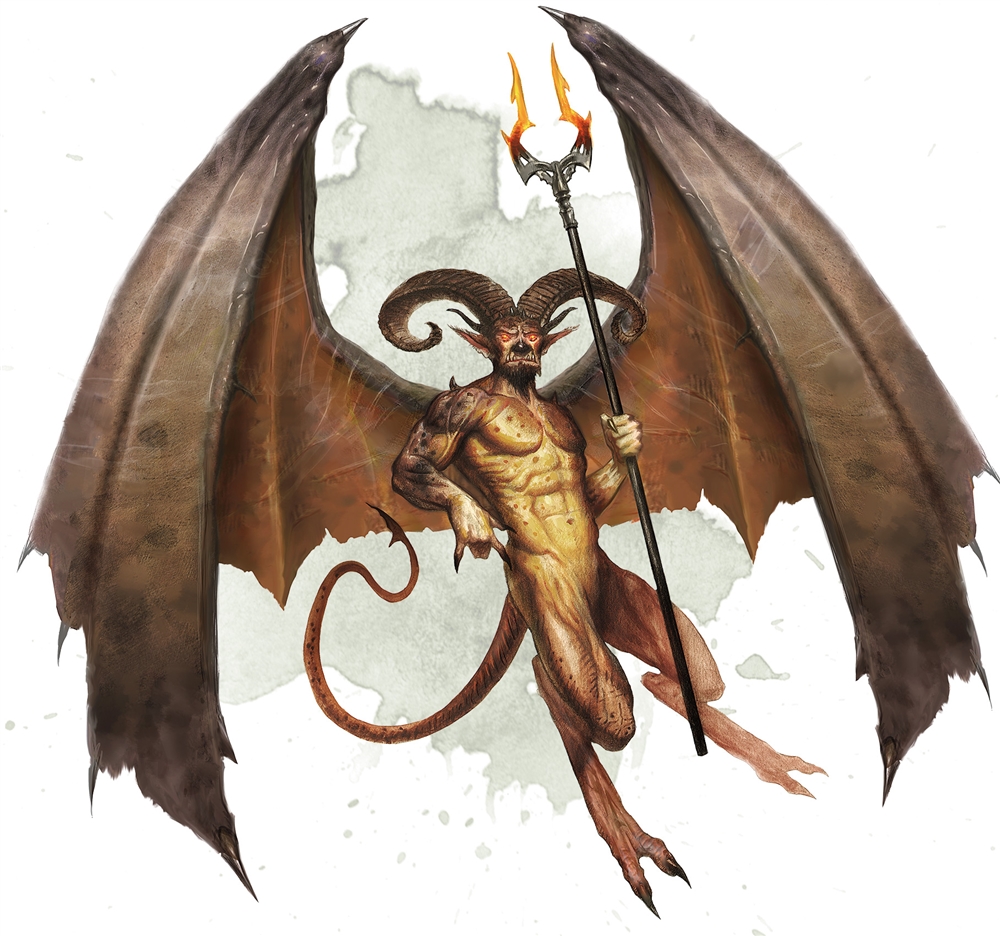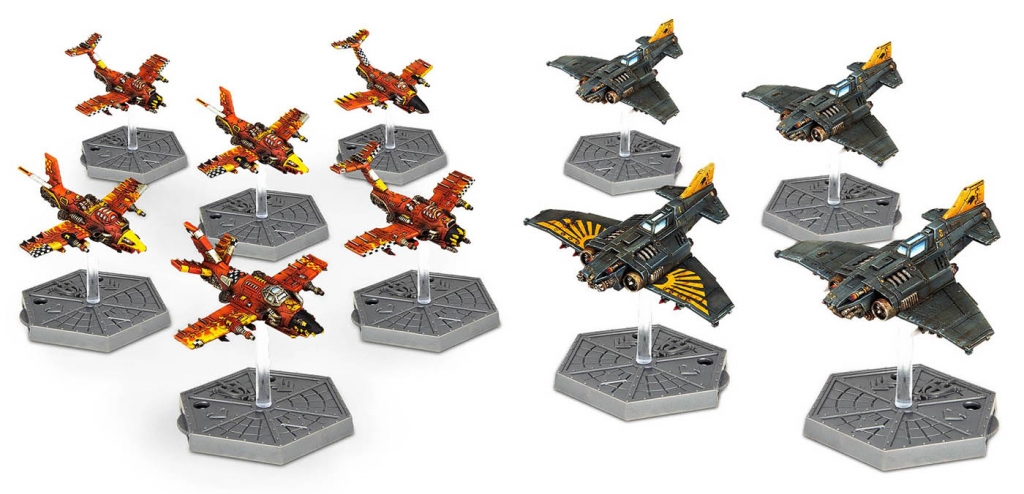D&D Monster Spotlight: Horned Devils
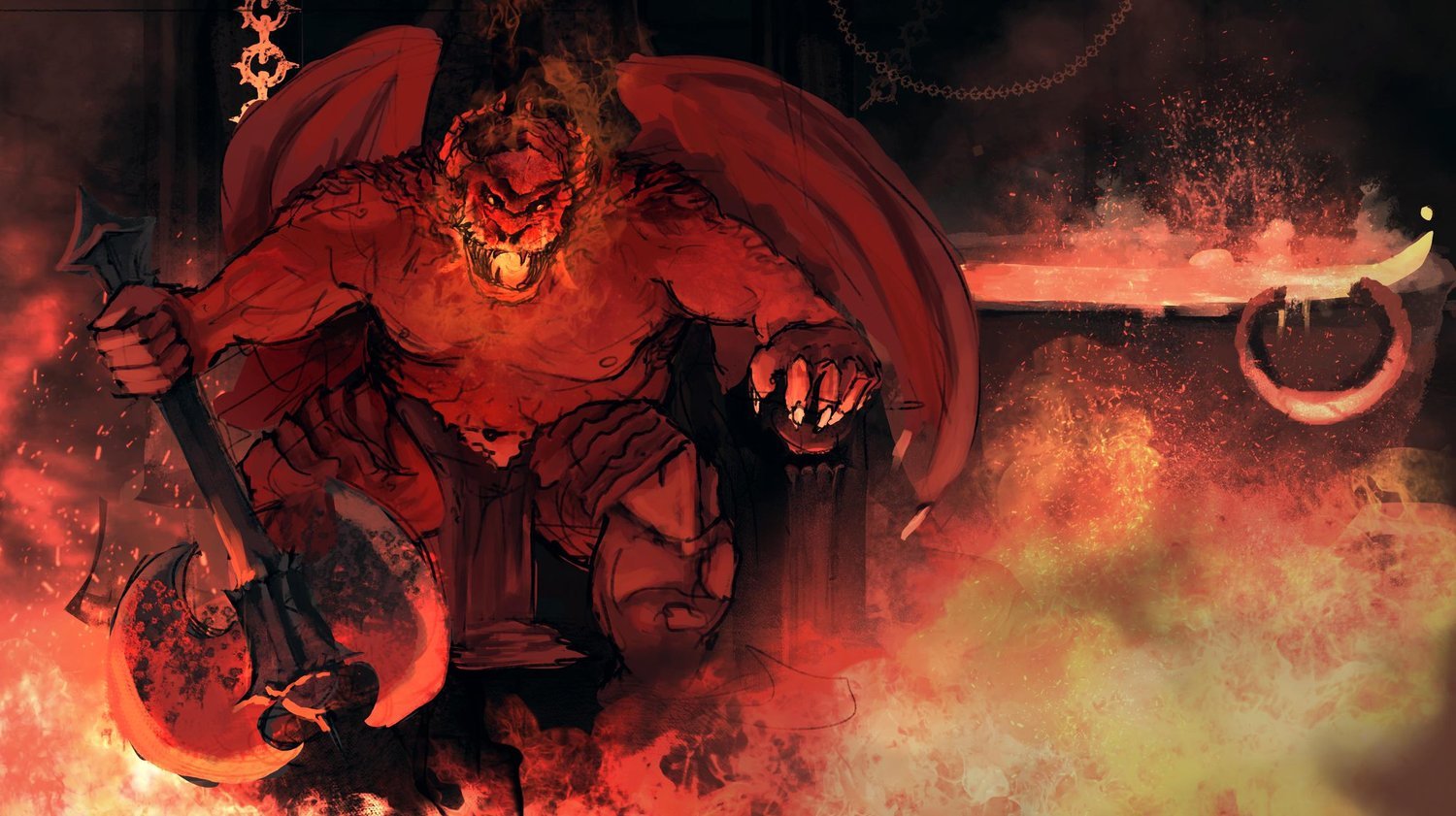
Devils with hooves, leathery wings, horns, pointy tails, and pitchforks? Hmm maybe there was something to that satanic panic after all.
Horned Devils are a hoofed step into “classic devil” territory. And when I say classic I mean classic–the artwork and the description and the actions of these particular devils take us firmly into Divine Comedy territory. Which is fair, given that most of D&D’s idea of the Nine Hells comes from the different Circles of Hell found in Dante’s seminal work. There we find the Malebranche, demons who guard the eighth circle of hell, where they quarrel and threaten corrupt politicians, forcing them to stay beneath a boiling lake of pitch.
Their leader, Malacoda, assigns a troop of devils to escort Dante and Virgil across a boiling lake of pitch while also satirizing politicians of the day just by virtue of their names. But you didn’t come here to talk literature, you came here to look at the history of monsters–and though this is where the history of Horned Devils (even categorized as Malebranche in 1st edition) begins, it is by no means where they end. Let’s take a look.
As you can see, these devils are basically the template for a generic “devil.” They’re powerful, and come in two flavors: whip or pitchfork wielding. They are also equipped with a number of powerful spell-like abilities, including pyrotechnics, produce flame, ESP, and the ability to summon another horned devil with about a 50% success rate. Though most notably they all can create a triple strength wall of fire that deals 3d8 points of damage continuously (naturally they are protected from this). Frightfully hard to hit, and capable of attacking multiple times per round, as well as flying, being bigger than usual, and having a lot of hit points, Horned Devils are some of the more powerful threats in the Nine Hells.
2nd Edition Horned Devils drop even the malebranche epithet in their quest to distance themselves from the ongoing panic. Cornugons, as they came to be called, were all natively telepathic and exemplify the peak of D&D physical abilties. With 18/00 strength and massive damage bonuses, their attacks could devastate an unprepared party. And then drop on top of that their spell-like powers, which now also include lightning bolt, and you’ve got a stat block that lives up to the fluff.
Cornugons, in this edition, are the elite fighting force in the Nine Hells. Often formed into terrifying armies up to 2,000 strong, Cornugons report only to pit fiends, and serve powerful devils as bodyguards, retainers, and so on. For their part, Cornugons try and live it up a little, until they find some traitorous power to serve with unflinching loyalty.
3rd Edition Horned Devils have more of a cool 90s look to them, losing their kinda goofy look for a much more VFX department-rendition of what a devil should look like. Horns and scales and massive, these devils take on a much more elite role. Here they begin to cause problems for parties in earnest, as they wield spiked chains, aka the most shenanigans of all D&D 3.x weapons.
But on top of that, their tail attacks deal out continuously bleeding wounds that require a Heal check and bleed so much that only Heal, the big one, can help to close up a Cornugon’s infernal wounds. These devils do not mess around–they’ll straight up stun you with their spiked chains too.
Cornugons become “War Devils” in 4th Edition where they wield tridents that can topple foes. It’s interesting, because they fill the role of Brutes–but they’re also quite capable Leaders. Which matches their Lore in this edition as well–Cornugons are generals and tacticians and skilled at directing lesser devils at the behest of pit fiends or mortal summoners.
Their abilities reflect this too. War devils can swap positions with allies, make their allies move and attack, and of course can make it easier for their foes to attack their marked targets.
5th Edition Horned Devils look fearsome, but lose some of their rep. With more of a nod to their origins in the Divine Comedy, they are lazy and belligerent, and will fight, when provoked–but otherwise these large devils prefer to let others do their work for them.
And as far as devils go, this version of devils is a solid combatant. Like all devils they have Magic Resistance and Devil’s Sight, so they can see even in Magical Darkness, and will absolutely save against your spells. Multiattack makes them a potent threat, especially when coupled with their 60ft fly speed and 10ft reach. They can swoop in, attack an opponent, then fly up out of range. And with a deadly tail attack that increases damage dealt to a foe, they can quickly make short order of unprotected heroes.
So if you’re looking for a hard hitting melee encounter that won’t just crumble under the pressure applied by a party, Horned Devils are the way to go.
Happy Adventuring!

